Author: EVAI

GM and ChargePoint deploying 500-kw fast chargers with Omni Port
General Motors and ChargePoint on Wednesday announced plans to deploy up to 500 DC fast chargers before the end of 2025.
Using GM Energy branding, the chargers will be supplied by ChargePoint, according to the companies. Many of the chargers will use ChargePoint’s Omni Port to allow electric vehicles with Combined Charging Standard (CCS) or North American Charging Standard (NACS) ports to charge at the same station without any adapter.

ChargePoint Omni Port
GM and ChargePoint promise power rates of up to 500 kw, surpassing those of the automaker’s current partnership with EVgo, which goes back to 2020 when GM announced that it would help fund the expansion of EVgo’s network, which is made up exclusively of fast chargers.
In 2021, GM and EVgo doubled down on that partnership, adding 500 more chargers to the original target of 2,750 by 2025, with an emphasis on urban locations and support for electric ride hailing. And earlier this year, the two companies announced 400 chargers in major U.S. metropolitan areas, to come online beginning in 2025. These will charge at up to 350 kw and will feature a gas-station-like pull-through configuration.
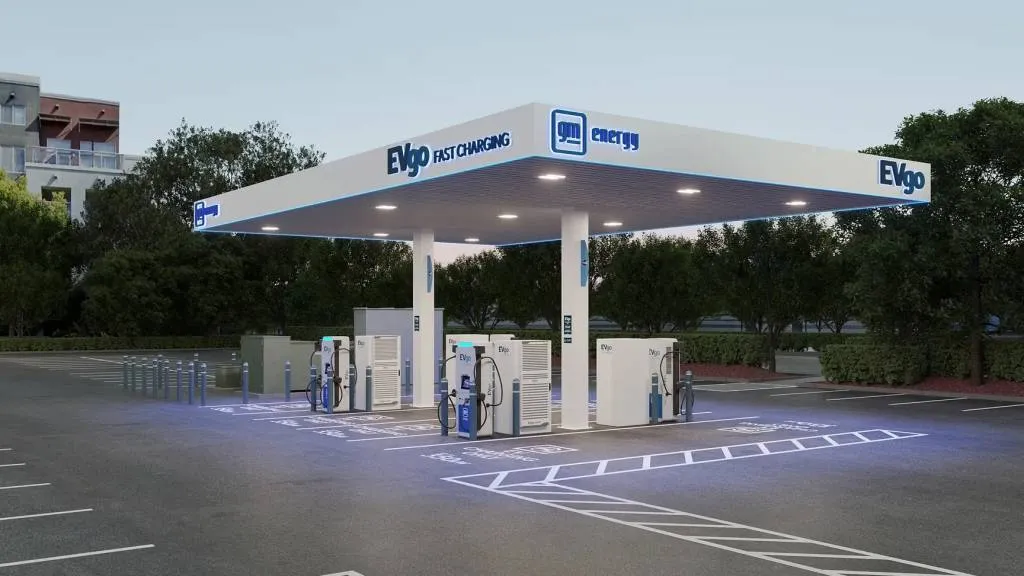
GM and EVgo flagship charging station
GM and EVgo also began collaborating on a coast-to-coast charging network in 2022, with 350-kw fast-chargers installed at Pilot and Flying J travel centers catering to road trippers rather than urban dwellers. The first of those locations opened in late 2023.
The additional charging partnership comes as GM plans to reset its battery strategy. Earlier this month the automaker announced that it would sell its stake in a Michigan battery factory to LG, while also partnering with that company on prismatic battery cells as a potential alternative to the pouch cells used in current GM EVs.

EPA approves California EV mandate, before likely Trump reversal
- One waiver allows California to set stricter rules for new vehicles—progressively mandating EVs
- A second EPA waiver green-lights the state’s heavy-duty vehicle emissions rules
- Trump may attempt to withdraw the waiver, continuing the regulatory ping-pong
The EPA on Wednesday granted two requests from the California Air Resources Board (CARB) to implement and enforce the state’s Advanced Clean Cars II (ACC II) that set a course for ending sales of most new gasoline cars by 2035.
California drafted these rules, which would ban all new vehicles with combustion engines except for plug-in hybrids with substantial electric range, under its Clean Air Act waiver, which lets the state enact emissions rules stricter than the federal standards. Several states follow California’s emissions rules and are expected to do the same with ACC II—if California’s emissions authority survives likely attempts by the incoming Trump Administration to reverse it.
For now, the EPA has acknowledged California’s independence regarding the ACC II standards, which cover light-duty and medium-duty vehicles for model years 2026 to 2035. The second waiver granted by the EPA relates to California’s “Omnibus” regulations for heavy-duty vehicle emissions which, like ACC II, set stricter targets than those of the federal government.
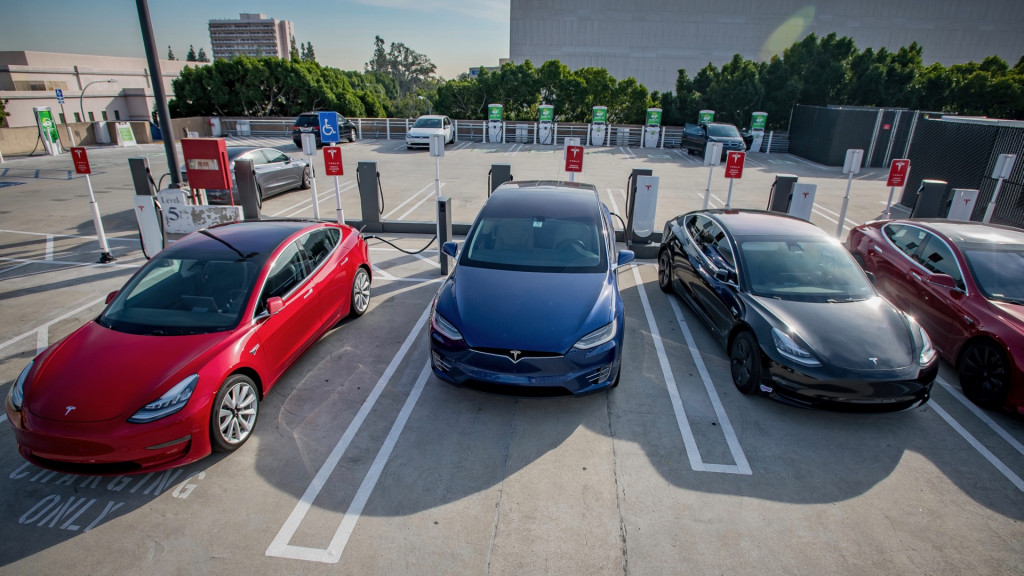
Marengo Charging Plaza, Pasadena, California
The move received predictable praise from environmental groups, including the U.S. Climate Alliance, a bipartisan coalition of governors. Together, the California-emissions states represent 60% of the U.S. economy and 55% of the U.S. population, according to the organization.
“This action means cleaner air in our communities, lower costs and expanded choice for consumers, and more good-paying jobs and investment in manufacturing across America,” U.S. Climate Alliance executive director Casey Katmins said in a statement.
In addition to California, Oregon, Washington State, New York, Massachusetts and Vermont have adopted ACC II starting with the 2026 model year, while Colorado, New Jersey, Delaware, Rhode Island, New Mexico and Maryland have signed on for the 2027 model year. These states represent a significant portion of new-car sales.

Marengo Charging Plaza, Pasadena, California
As noted by The Washington Post, industry trade group the Alliance for Automotive Innovation said in a memo last week that the states following California’s lead here are part of an “unaccountable, unachievable regulatory wormhole.” That’s less because of the legitimacy of California’s regulatory move because of where those states rules might stand in another likely challenge to California’s emissions authority by the second Trump Administration.
Under the previous Trump administration, the EPA was headed by a former coal lobbyist and aimed to withdraw the waiver enabling California’s emissions authority in 2019. Under the Biden Administration, the EPA planned to reinstate it in 2021—with public input. This past week the Supreme Court rejected a challenge from the oil and gas industry, also seeking to withdraw the waiver, but that doesn’t rule out future challenges.
Although it’s unclear whether Trump will ultimately attack states’ rights by once again meddling with California’s waiver, he’s emphasized that he may nix some of the Biden administration’s policy supporting EVs.
Honda 0 Series EV prototypes head to 2025 CES
 Honda will unveil a pair of 0 Series prototypes at 2025 CES Teaser photo points to one of the prototypes being an evolution of the Honda Saloon concept unveiled during 2024 CES First 0 Series EV is due to start production around 2026 Honda will use the 2025 Consumer Electronics Show (CES) next month to unveil a pair of prototypes that the…
Honda will unveil a pair of 0 Series prototypes at 2025 CES Teaser photo points to one of the prototypes being an evolution of the Honda Saloon concept unveiled during 2024 CES First 0 Series EV is due to start production around 2026 Honda will use the 2025 Consumer Electronics Show (CES) next month to unveil a pair of prototypes that the…

Honda 0 Series EV prototypes debuting at CES Jan. 7
Honda will unveil prototypes of its 0 Series electric vehicles at CES in Las Vegas on Jan. 7, 2025.
The pair of prototypes follow initial concept versions unveiled at CES 2024 this past January, and preview production models due in 2026. A teaser image shows one vehicle that appears to retain the general shape of the Honda Saloon concept shown at CES 2024, while the other trades the van-like form of the previous Space-Hub concept for something more SUV-like.
Honda previously confirmed that a production model based on the Saloon concept would be the first to arrive, but it will be just one of multiple EVs based on the same 0 Series building blocks. It marks Honda’s first attempt at a scalable EV component set after several false starts, and reliance on General Motors underpinnings for the Honda Prologue and Acura ZDX electric SUVs.
At least some of these models will be U.S.-made. The automaker is currently retooling Ohio facilities, and constructing a new battery plant, with the goal of potentially producing hundreds of EVs per day but flexibly mixing production with hybrids as needed. That will ensure the 0 Series EVs aren’t niche models, but Honda has cautioned that they won’t be electric replacements for the likes of the Accord or CR-V either.

Honda Saloon EV concept
In addition to EVs for the main Honda brand, the 0 Series platform will be used for an Acura model drawing inspiration from this year’s Performance EV concept, as well as EVs from the joint Sony-Honda brand Afeela. The Acura and Afeela models will also be manufactured in Ohio.
Honda has also said the 0 Series will have lightweight, energy-dense battery packs, with later versions of the platform using batteries that will eventually be able to charge from 15%-80% in just 10-15 minutes, and will lose no more than 10% of their original capacity and range after 10 years of use. A prototype drive of the 0 Series architecture earlier this year indicated Honda will be able to combine sleek aero-efficient shapes with sharp handling.
Rivian R1S: Green Car Reports Best Car To Buy 2025 finalist
 Rivian reworked battery and propulsion hardware, boosting range and efficiency R1S and R1T get retuned ride and handling, quieter cabins A simplified electrical architecture, revamped interface, new modes Yes, the 2025 Rivian R1S electric SUV looks almost exactly the same as it did last year. And yet it’s a Green Car Reports’ Best Car…
Rivian reworked battery and propulsion hardware, boosting range and efficiency R1S and R1T get retuned ride and handling, quieter cabins A simplified electrical architecture, revamped interface, new modes Yes, the 2025 Rivian R1S electric SUV looks almost exactly the same as it did last year. And yet it’s a Green Car Reports’ Best Car…
Sergio Perez leaves Red Bull F1 team
 With the 2024 season over the F1 drama ensues. On Wednesday Sergio Perez, known as Checo, announced on Instagram he is parting ways with Red Bull Racing now that the 2024 season’s complete. “Driving for Red Bull has been an unforgettable experience and I’ll always cherish the successes we achieved together,” Perez said. Perez signed with the Red…
With the 2024 season over the F1 drama ensues. On Wednesday Sergio Perez, known as Checo, announced on Instagram he is parting ways with Red Bull Racing now that the 2024 season’s complete. “Driving for Red Bull has been an unforgettable experience and I’ll always cherish the successes we achieved together,” Perez said. Perez signed with the Red…

Honda and Nissan prepare merger talks to fend off Tesla and Chinese EVs
- Merger talks between Honda and Nissan might begin
- The merger would put the automakers under holding company
- EVs, hybrids, and software could be at the core of potential overlap
Honda and Nissan are close to starting merger talks aimed at fending off electric-vehicle competition, reports Nikkei.
The Japanese news daily reported on Tuesday that Honda and Nissan are close to signing a memorandum of understanding as a first step toward merger talks, with Mitsubishi potentially joining as a third partner. Nissan already owns approximately 34% of Mitsubishi shares, and there has been some platform sharing between the two automakers.
The current plan is for the merged automakers to operate under a holding company, according to the report, which cites competition from Tesla and Chinese automakers in the EV segment as one of the main factors behind the merger talks.

2023 Nissan Ariya e-4orce
This follows a March announcement by Honda and Nissan of a memorandum of understanding for a “strategic partnership in the fields of vehicle electrification and intelligence” expected to cover EVs, hybrids, and software. Mitsubishi was tipped to join that partnership in August. The current alliance between Nissan, Mitsubishi, and French automaker has also collaborated with Honda in the past, most recently on the Altna battery-leasing joint venture.
Combined sales of Honda and Nissan in 2023 totaled more than 8 million vehicles. That would make the merged automaker the third largest by sales volume after Toyota and the Volkswagen Group, which sold 11.2 million and 9.2 million vehicles in 2023, respectively.
A full merger would likely be a needed lifeline for Nissan. The automaker in October announced plans to lay off approximately 9,000 employees, representing 6.7% of its global workforce, and cut production capacity by 20% due to declining sales, primarily in the U.S. and China.
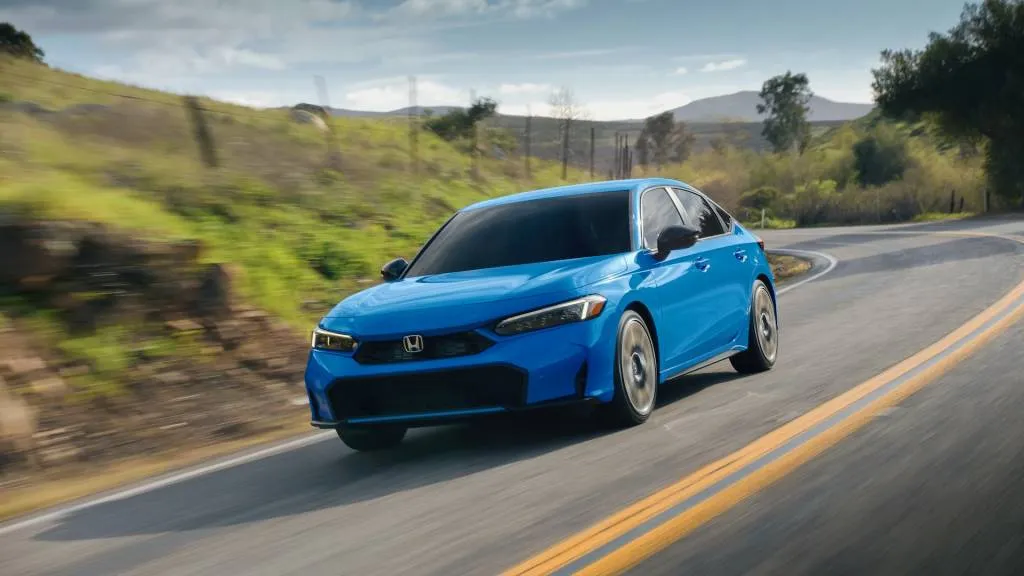
2025 Honda Civic Hybrid
Both automakers are in the midst of an EV reset, with Honda preparing to roll out its 0 Series starting in 2026 and Nissan preparing a next-generation Leaf, as well as larger models for assembly in Mississippi.
Hybrids could present more immediate opportunities for integration. Honda’s two-motor hybrid system could replace Nissan’s e-Power hybrid system, which still hasn’t made it to the U.S. after years of discussion. Nissan, meanwhile, could take the lead in electrifying pickup trucks and SUVs—including the body-on-frame models Honda currently lacks.

Ram REV electric pickup truck delayed to 2026, Ramcharger set for 2025
- Ram now plans its first electric truck for a 2026 launch
- Series-hybrid Ramcharger on track for the first half of 2025
- Stellantis—without a permanent CEO—says battery-electric demand is slowing
The all-electric Ram 1500 REV full-size pickup truck has been delayed once again, with the series hybrid Ram 1500 Ramcharger now due to arrive before it, Stellantis confirmed Wednesday in a press release.
The REV was shown before the Ramcharger, debuting in a 2023 Super Bowl ad. It had been scheduled to arrive at dealerships before the end of this year as a 2025 model. But last month, now-ousted Stellantis CEO Carlos Tavares said the launch would be delayed until the first half of 2025 to ensure quality. Now Stellantis says the REV won’t arrive until 2026.
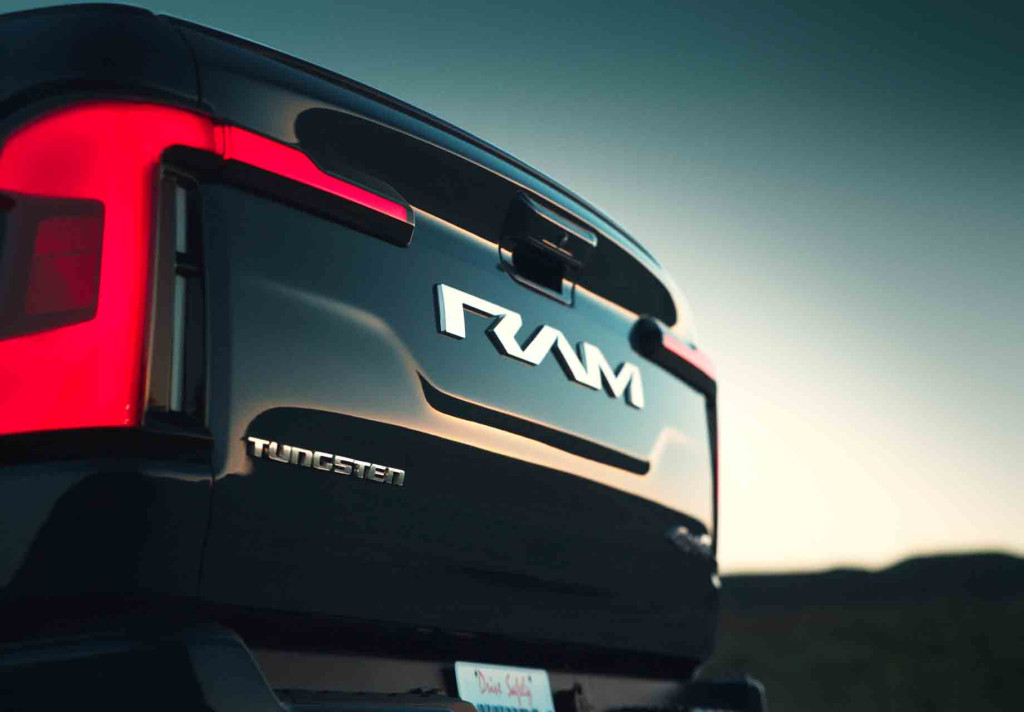
2025 Ram 1500 REV
Instead, order books for the Ramcharger, which uses a 92-kwh battery pack and a 3.6-liter V-6 engine acting as a range extender, will open in the first half of 2025. Stellantis hadn’t confirmed exact launch timing for the Ramcharger until now, but it seems that introducing it first is a change of course by the automaker.
“The decision to launch Ramcharger first was driven by overwhelming consumer interest, maintaining a competitive advantage in the technology, and slowing industry demand for half-ton BEV pickups,” the release said.

2025 Ram 1500 Ramcharger
The Ram 1500 REV had aimed offset its late arrival with big specs: up to 500 miles of range from a 229-kwh battery pack. If it launches with no mechanical changes in 2026, a 168-kwh pack will be standard, delivering what Ram estimates to be up to 350 miles of range. Ram has also confirmed a dual-motor all-wheel-drive powertrain producing 654 hp and 620 lb-ft of torque, with a 0-60 mph time of 4.4 seconds, 14,000-pound towing capacity, and 2,700-pound payload capacity.
Ram has said the Ramcharger can get 145 miles of pure electric range, but its V-6 range extender can add 545 miles. It also more or less matches the Ram 1500 REV’s power output, acceleration, towing, and payload numbers. And while its rivals already offer all-electric pickups, the Ramcharger will give Ram a head start on plug-in hybrid trucks. So from the outset, it was always likely that the Ramcharger would upstage the REV—and that is now happening.

Supreme Court rejects challenge to California EV mandate—for now
The U.S. Supreme Court on Friday declined to hear a challenge to California’s emissions authority, allowing the state to, for the time being, continue with plans to gradually phase out sales of new internal-combustion vehicles.
The Court denied a petition by Ohio and other states to consider the merits of challenges by oil and gas companies to California’s Clean Air Act waiver, which allows the state to set its own, stricter emissions standards. The Court said it would only consider whether those companies had standing to bring their claims.
This removes one potential threat to California’s regulatory authority, but there’s likely more where that came from. As California prepares to ban the sale of non-plug-in gasoline vehicles by 2035, conservative interests are targeting its EV-friendly policies.

Rivian Adventure Network charging site in Joshua Tree, California
The Heritage Foundation’s Project 2025, which might serve as a blueprint for the incoming Trump Administration, doesn’t call for an outright revocation of the waiver, but does aim for it to be reduced to cover only pollution issues specific to that state, as well as ensuring that other states that adopt California environmental standards only do so for “traditional/criteria pollutants”—not greenhouse gas emissions.
This would effectively excise the EV portion of California’s emissions standards, making for a much more surgical strike against EV policy than in the previous Trump Administration, which acted to remove California’s emissions authority outright in 2019. That challenge went to the courts, for different reasons, and the emissions authority was eventually restored by the Biden Administration.
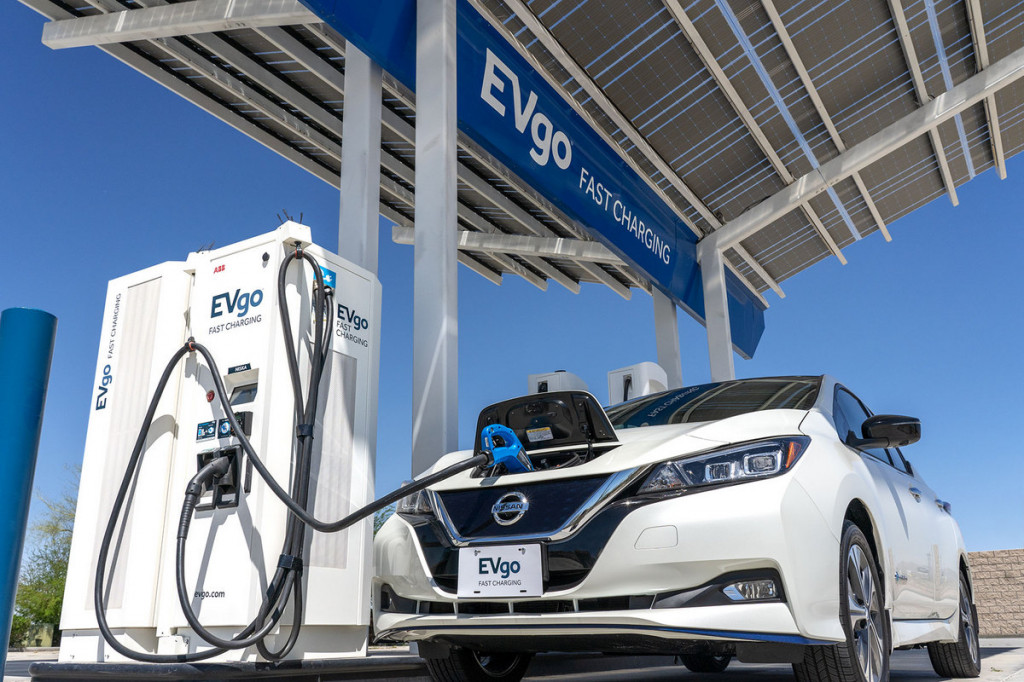
Nissan Leaf charging at EVgo fast charger in Baker, California
Last time around, a series of automakers made side deals with California, backing it because it simply made better sense on the global landscape. BMW, Ford, Honda, Volkswagen, and Volvo asked a federal court to uphold California’s emissions authority, while General Motors, Fiat Chrysler Automobiles (now Stellantis), and Toyota sided with Trump.
It’s unclear how persistent the second Trump Administration will be in trying to dismantle Biden’s clean-energy and EV-focused policy, but things do not look good on that front. In this case, though, attacking policies will also mean attacking states’ rights—ostensibly one of the core values of the Republican Party.
Review: 2025 Audi SQ6 E-Tron tunes into the driver
 Market debut of new platform set to also underpin Q6 Sportback, A6 sedan Audi SQ6 E-Tron does 0-60 mph in 4.1 seconds, from 509-hp dual-motor system Gets an EPA-rated 275 miles in SQ6 E-Tron, up to 321 miles for base Q6 E-Tron Audi has always leaned into performance. Its vehicles have always been at their best with the magic that a little bit of…
Market debut of new platform set to also underpin Q6 Sportback, A6 sedan Audi SQ6 E-Tron does 0-60 mph in 4.1 seconds, from 509-hp dual-motor system Gets an EPA-rated 275 miles in SQ6 E-Tron, up to 321 miles for base Q6 E-Tron Audi has always leaned into performance. Its vehicles have always been at their best with the magic that a little bit of…




